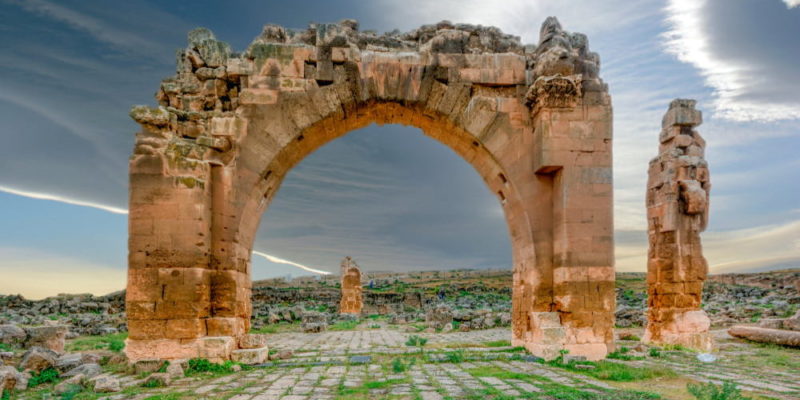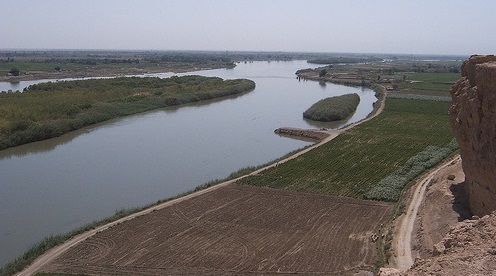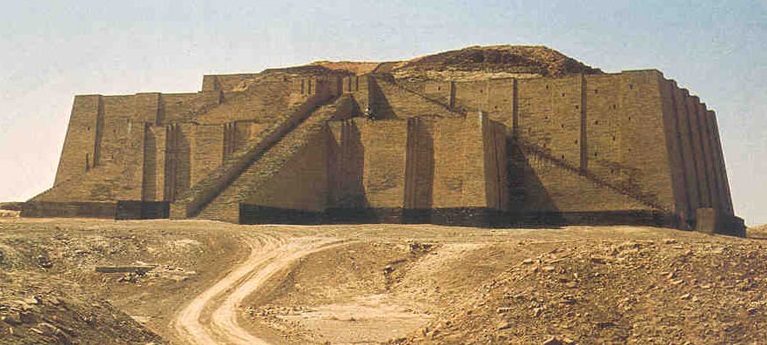Written by Michael C. Anderson, PhD, Contributing Writer, Classical Wisdom
Greek and Roman cultures are universally recognized as the greatest Western civilizations from the time we consider “ancient.” Their cultural and political influence provided a foundation for modern society and its political frameworks inspired post-Enlightenment governments.
The Greeks were specialists in ideas, pioneering modern philosophy, art, theater, poetry, mathematics, and science. The Romans, a more practical people, contributed engineering, law, and a political system called the Republic.
The accomplishments of Greece and Rome cast a long shadow over their predecessors. Older civilizations were seen as less important. That line of thinking is a serious mistake because Mesopotamia was one of the most important civilizations in all of human history. It was the world’s first true civilization, making it the father of all cultures in the West. Mesopotamia served as the crucible for mankind to develop agricultural, pre-dynastic, and monarchical cultures.
The word Mesopotamia is a collective term for several ancient cultures located between the Tigris and Euphrates Rivers in what is now Iraq. These societies prospered independently from 5000 BCE to 1800 BCE.
Their advent was facilitated by the presence of an alluvial plain–a gently sloping land surface formed by sediment left from rising and falling water levels–which inspired them to begin irrigation farming. Planting in an alluvial plain allowed for easier sowing and watering. The softness of the ground allowed seeds to be pressed into the soil by hand without difficulty.
The history of the Mesopotamian region is too expansive to describe in a short article because its many separate cultures existed over a span of four millennia. To simplify the story, we will focus our discussion on Sumer, arguably the most important of the Mesopotamian cultures. The term Sumer refers to a specific southern region of Mesopotamia, near the point where the Tigris and Euphrates empty into the Persian Gulf. This is the place that gave rise to one of the world’s great ancient cultures.
The map above shows ancient Sumer and its cities. At the time when Sumer was established (6500BC), the Persian Gulf extended farther north than it does today. Baghdad and Babylon are shown as reference points only. Neither existed during the time of Sumerian domination.
The Ubaidians were the first to exploit the alluvial plain of Sumer and build a civilization between the great rivers.
The cities shown on the map, which would later become the jewels of Sumer, were originally Ubaidian. We know this because their names predate the Sumerian language. The Ubaids developed a civilization of farmers, cattle raisers, and fishermen. Their craftsmen included weavers, leatherworkers, carpenters, smiths, potters, and masons. Excavated remains from the period include hoes, adzes, and knives, along with clay artifacts such as sickles, bricks, loom weights, figurines, and painted pottery. Together, these artifacts provide a record of stunning accomplishments for a people who predated the Greeks by 4,000 years.
As the Ubaid culture matured, outsiders from the Syrian desert region and Arabian Peninsula began to settle in their territory after 4500 BCE. They gradually gained control via assimilation and military conquest. The result was an ethnic fusion that became Sumer. By 3800 BCE, the Sumerian civilization had reached its peak.
The ziggurat is a Mesopotamian temple and one of the most important symbols of the Sumerian civilization. They were the largest-known structures built by man at the time and represent the power and sophistication of the great Sumerian cities. The Sumerians believed the gods resided in their temples and so they prohibited the public from entering their sanctuaries. The ziggurat also contained separate structures for grain storage, recalling the time when Sumarian cities were theocracies, and the priests served as municipal administrators in addition to their religious duties.
The first phase of the Sumerian Era is known as the Uruk period (4100-2900 BCE), named after the Sumerian city of the same name. Uruk seems to have been the cultural centre of Sumer because it housed the principal monuments of the region and exhibited the most obvious traces of an advanced urban society. By 3500 BCE, the world’s first system of writing had been developed and Uruk exerted influence over the entire Near East. The written form of the Sumerian language, Cuneiform, was developed through the evolution of representative characters (pictograms) into non-representative forms.
Sumer was the most agriculturally productive region of Mesopotamia, the result of an irrigation system that focused on the cultivation of barley and the pasturing of sheep for wool. Although it lacked mineral resources and its climate was arid, the region had undeniable geographic and environmental advantages, including a vast delta with a flat region transected by waterways. This vast area of cultivable land allowed easy transit by river or land. Sumer became a highly populated and urbanized region by 3500 BCE, with a social hierarchy, an artisan economy, and long-distance commerce.
During Sumer’s Uruk period, trade along the canals and rivers of southern Mesopotamia facilitated the rise of many large, stratified, temple-centered cities with populations of over 10,000 people. These cities featured centralized administrations that employed specialized workers. It was during the Uruk period that Sumerian cities began to make use of slave labor, of which there is ample evidence from written texts.
Following Sumer’s Uruk period, an early dynastic period evolved in 2900 BCE. Political systems became centralized and were controlled by small groups of individuals. Multiple city-states developed and solidified during this period, which was associated with a shift from the temple establishment led by a council of elders headed by a priest towards a more secular establishment.
Legendary leaders such as Dumuzid the Fisherman, as well as Lugalbanda and Gilgamesh, appeared. The center of Sumerian culture remained in southern Mesopotamia, even though rulers soon began expanding into neighboring areas. Local Semitic groups adopted much of Sumerian culture.
The earliest recorded dynastic Sumerian king is Etana, 13th king of the first dynasty of Kish. As the Epic of Gilgamesh shows, this period was associated with increased war. Cities became walled and increased in size, and undefended villages in southern Mesopotamia disappeared. Both Enmerkar and Gilgamesh are credited with having built the walls of Uruk.
In the year ~2350 BCE, the Sumerian dynasties were overrun by Sargon, king of the Akkadian Empire. Akkad and its capital Agate were located to the north of Sumer, just beyond Kish. The Akkadian Empire is considered the first empire in human history. Sargon’s rule expanded to include the territory from the Persian Gulf to Cyprus, but his empire proved to be unstable and collapsed after two hundred years.
After the fall of the Akkadians, the Sumerians tried to regain power. The 3rd dynasty of Ur under Ur-Nammu and Shulgi was able to extend its power northward into Akkadian territory, but Ur III only survived for 100 years before being absorbed into the growing Babylonian Empire. By then, the region had become more Semitic than Sumerian, with the resurgence of the Akkadian-speaking Semites in Assyria and elsewhere. The Sumerian language continued as a sacerdotal language taught in schools in Babylonia and Assyria, much as Latin was taught in the Medieval period.
The period of Ur III coincided with a major population shift from south to north. Ecologically, the agricultural productivity of the Sumerian lands had been compromised by rising salinity. Poorly drained irrigated soils, in an arid climate with high levels of evaporation, led to the buildup of dissolved salts in the soil, severely reducing agricultural yields over time. During the Akkadian and Ur III phases, there was a shift from the cultivation of wheat to the more salt-tolerant barley, but this change was ineffective. From 2100 BCE to 1700 BCE, it is estimated that the population of Sumer declined by nearly three fifths.
This greatly upset the balance of power within the region, weakening the areas where Sumerian was spoken, and strengthening those areas where Akkadian was the major language. From that point on, Sumerian would survive as a literary and liturgical language.
The story of the Sumerians is only one piece of the extraordinary history of the Mesopotamian region, which changed mankind forever by establishing agriculture and animal husbandry as essential components of human society. These accomplishments place them beside Greece and Rome in the pantheon of the world’s great ancient civilizations.
References:
Climate Change Post. Climate change impacts in the Euphrates–Tigris Basin. March 27,2021.
Arch Eyes: Timeless Architecture. Religious Architecture. Urban Design. Ziggurat Architecture in Mesopotamia, April 18, 2016.














One comment
Interesting… but it’s Greece & Rome. There’s a lot of pre-Roman Greek history in western Anatolia (e.g., Troy) but trying to argue that much of Mesopotamia to the East is truly some kind of foundation of Western Civilization is quite a stretch; sounds like a modern Multiculturalist view. There are also more substantive things about a people than just culture. It’s arguable that the word, “CIVilization”, should not be misappropriated and should not be retroactively applied before Ancient Rome (& Greece).
Our apologies, you must be logged in to post a comment.